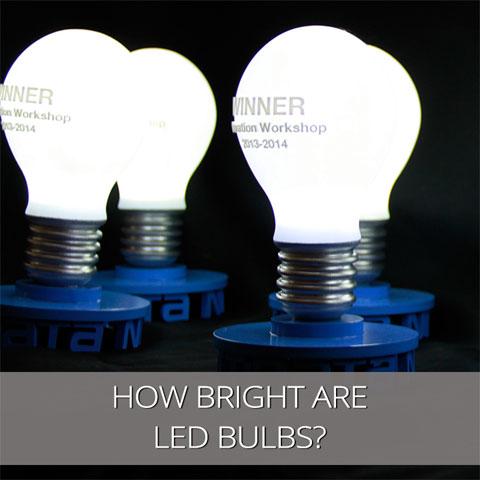How Bright Are LED Bulbs?
There are a few things that you need to consider when looking for LED lightning since there are some misconceptions about this technology. Commonly it is assumed that LED bulbs are brighter than conventional lightning and this is partly the case. More importantly, LED technology is as bright as traditional lightning at a lower power requirement. The two units that are important to understanding this is the lumen, which is a measure of brightness and the watt, which is a measure of power consumption.

Consider the following: a traditional 100 watt incandescent light bulb gives off about 1600 lumens of light. For LED bulbs, the same 1600 lumen light output is achieved at 16 to 20 watts of power, five times less than traditional lightning! The economic nature of LED bulbs means that for a much lower energy cost you can achieve the same amount of light output. So how bright can an LED light get? and How bright is a lumen?
To put it into laymen's terms, a lumen is the amount of light that a device emits. Brightness is then a perception depending on how much light there is, the distance the viewer is away from the light source and how focused the light is. Candela is a unit used to measure lumens at a certain distance and can be used to describe brightness as well. When comparing two lights, however, measuring brightness from each at the same distance will give an accurate measure of brightness.
How bright can an LED get, then? there are consumer grade flashlights that use a 100 watt LED bulb that achieves 7500 lumens of output! That's exceedingly bright and only suitable for outdoor lighting as opposed to indoor lighting.
The Benefits of LED lighting are many, the main is their brightness bang for your buck. Getting more lumens at a lower energy cost saves money every month and helps the environment immeasurably by reducing the number of light bulbs that reach the landfill. Bottom line, LED light bulbs are brighter than incandescent light bulbs.

